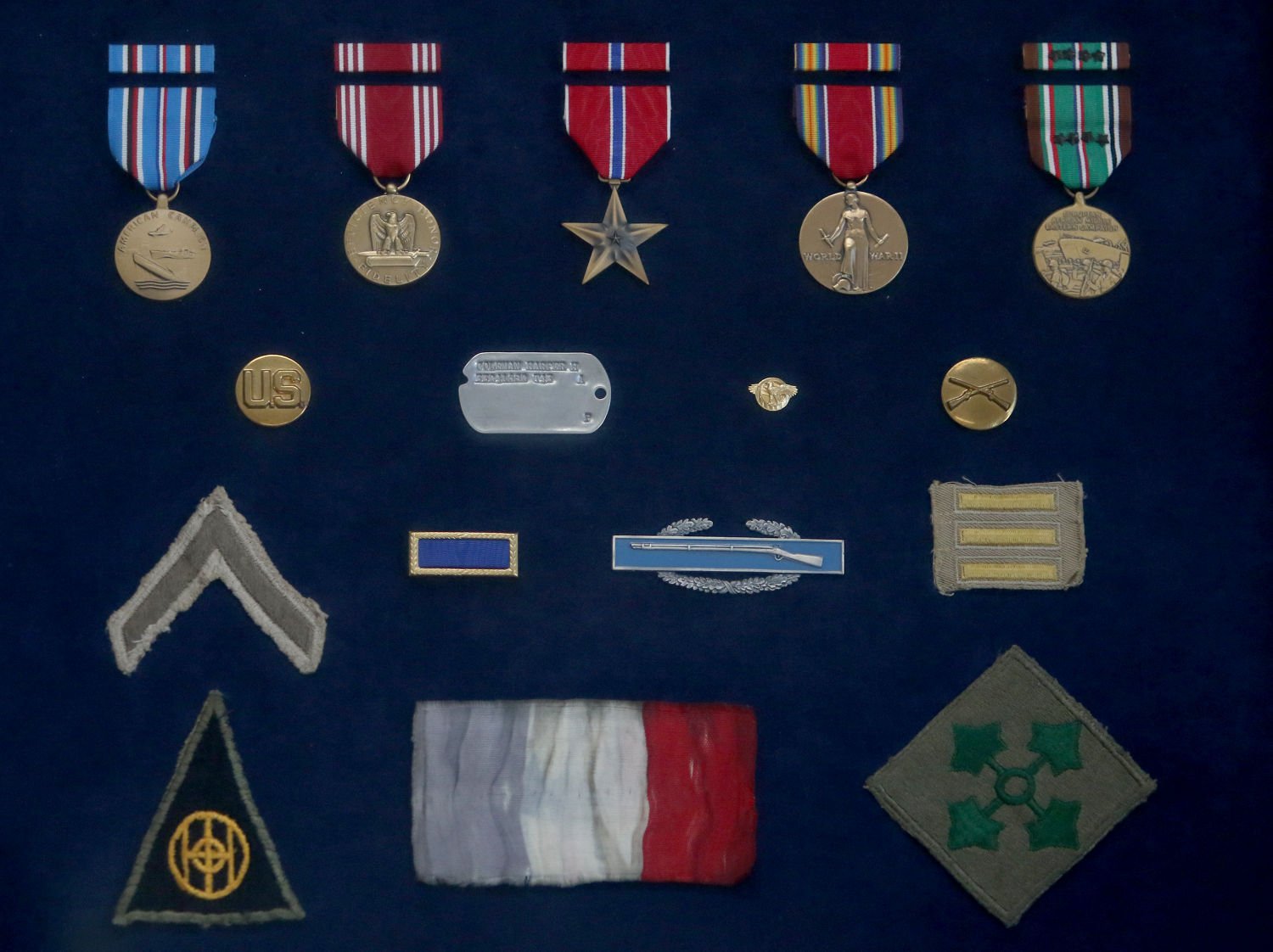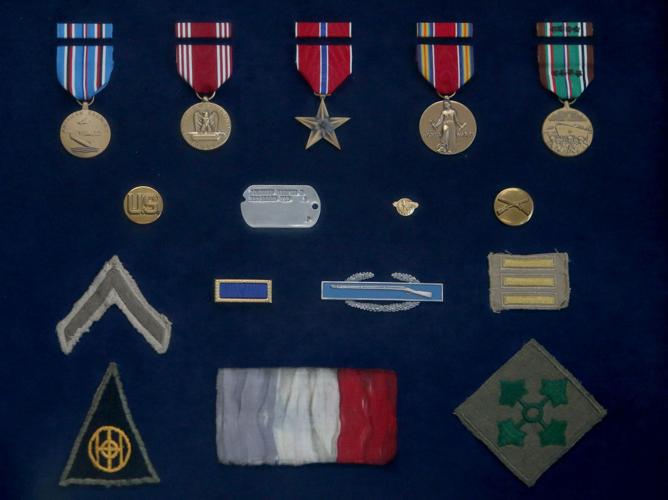When Harper Coleman jumped into the water at Utah Beach, he faced a sight nearly as daunting as the German guns trained on him: Gen. Theodore Roosevelt Jr. waving his cane at the troops and yelling: “Go, go, go!”
“He was a rough talker,” Coleman, 93, said with a chuckle. “He wasn’t using any Sunday school language.”
Coleman, then 22, was among the first waves of troops to land at Normandy on June 6, 1944, also known as D-Day. More than seven decades later, a painting of the Normandy landing hangs on the wall of the Arizona room in his east-side home.
He stayed on the front lines as a private with the Army’s Fourth Infantry Division for the next seven months, fighting for the port city of Cherbourg, liberating Paris, and holding off the German offensive that came to be known as the Battle of the Bulge.
 |
The Allied forces turned the tide of World War II in late 1944, but the momentous nature of the effort wasn’t at the forefront of Coleman’s mind.
“I was a kid. I didn’t think much about it,” he said.
Coleman had more immediate concerns, such as fighting his way through the hedgerows of France, which meant dealing with German defenses set up near the ancient rows of dirt, brush, and trees that separated farms.
“It was hop and jump the whole way from the beach to Cherbourg,” he said.
Eventually the Fourth Division made it to Paris, four years after German troops first occupied the city. “It was a big party. It was wild,” he said.
Several months later, the euphoria had dimmed and Coleman found himself fighting in “terrible” conditions against the last major push by the German military into northern France.
“There was snow up to your waist and mud you just couldn’t believe and somebody shooting at you,” he said.
Near the end of the Battle of the Bulge, Coleman and about 700 other soldiers in his division were sent to hospitals in England. Days of wearing wet socks and shoes had taken their toll and the soldiers suffered from trench foot. “Your feet just froze,” he said.
 |
While in France, Coleman wrote letters back home to Kathryn McCleary in Shippensburg, Pennsylvania. The two were married not long after Coleman returned to the United States and have been together ever since. Two of their children served in the Air Force and another served in the Army.
Although he had every intention of staying away from the Army after he returned to Pennsylvania, jobs were scarce and Coleman started working at a nearby armory depot. He continued working for the Department of Defense and in 1967 he took an electronic supply job at Fort Huachuca, where he retired in 1977.
Coleman’s efforts on D-Day brought renewed recognition two years ago when the French Consulate in Phoenix awarded him the French Legion of Honor.
“It may not mean much here, but if you’re in France, I’m a ‘sir,’ ” he said with a grin.







